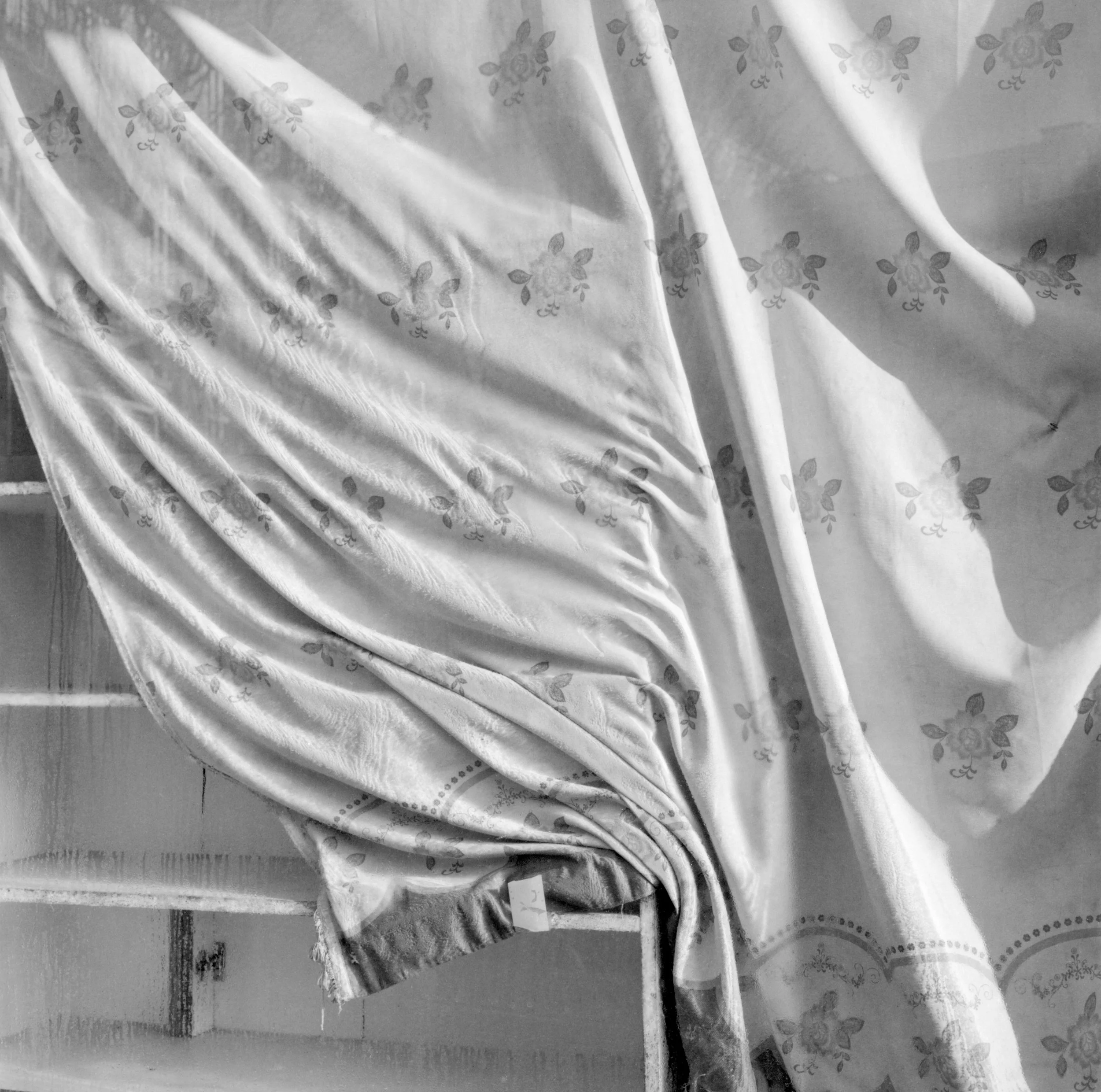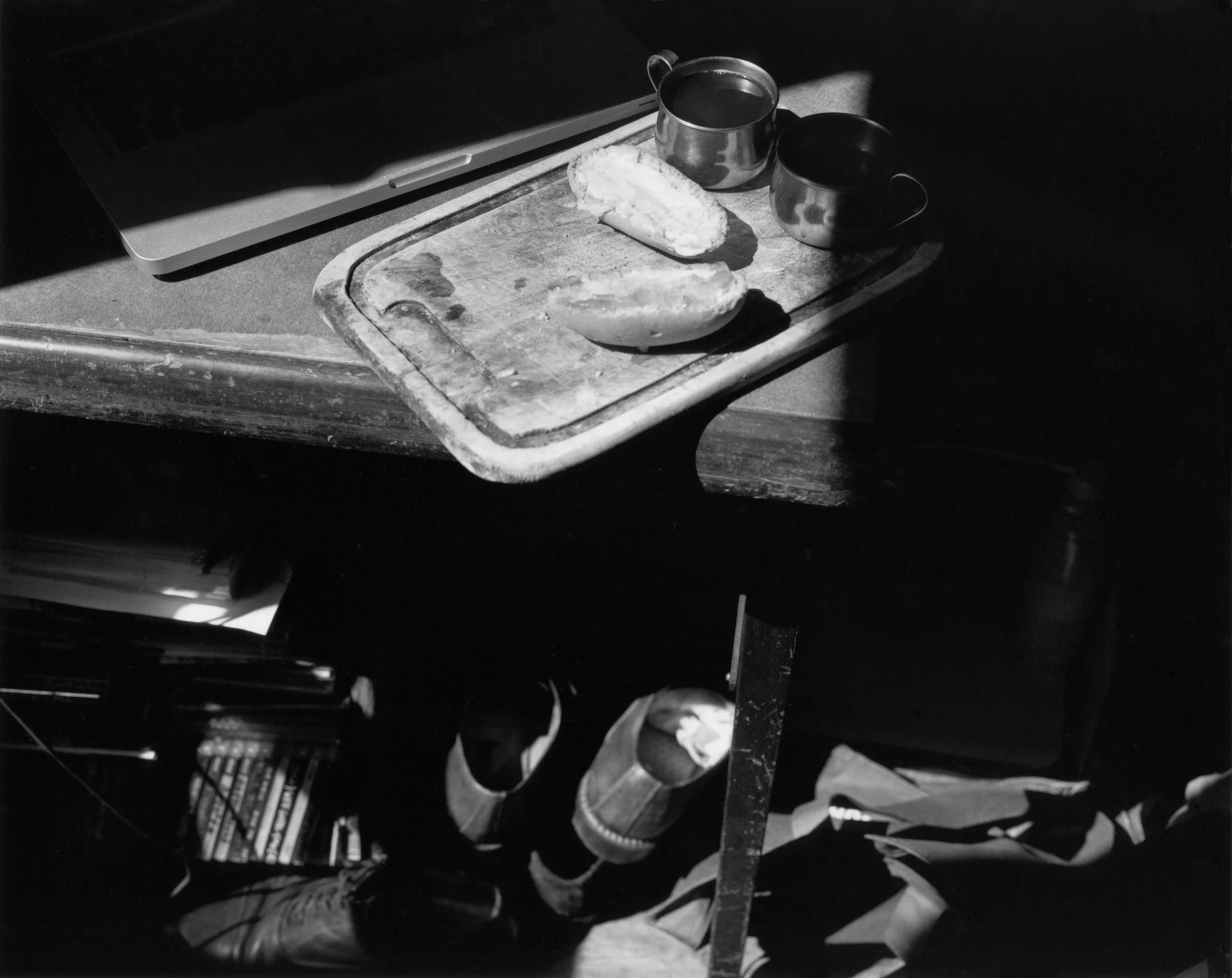How Thomas Boivin Captured the Essence of Ménilmontant: A Decade of Day Walks and Night Work
Welcome to this edition of [book spotlight]. Today, we uncover the layers of 'MÉNILMONTANT,' by Thomas Boivin (published by STANLEY/BARKER). We'd love to read your comments below about these insights and ideas behind the artist's work.
Imagine moving to a new neighborhood and finding that it transforms your entire life. That’s exactly what happened to Thomas Boivin when he moved to Ménilmontant in the fall of 2009. This vibrant Parisian quarter, nestled between Belleville and the Père Lachaise Cemetery, became the backdrop for Boivin’s journey into photography. With its rich history and bohemian community, Ménilmontant offered endless inspiration, shaping Boivin’s artistic vision and leading him to create a stunning photographic narrative over the next decade.
Thomas Boivin’s new book, “MÉNILMONTANT,” is a visual memoir of his ten years spent capturing the essence of this unique neighborhood. Through countless daytime walks and nighttime commercial photography jobs, Boivin developed a deep, intimate connection with the streets and people of Ménilmontant. His black-and-white images, rich with the nuances of analogue photography, reveal a Paris that is both timeless and deeply personal.
“I have no love for digital as a tool, it feels too abstract for me. I need to have a mechanical device, a relatively crude tool, and to touch my images, physically. Printing is just as important as it is a long process of working on the visual and tactile quality of the images definitively fixed. It’s really giving birth to an object …” - Thomas Boivin
Discovery and Transition: Moving to Ménilmontant marked a pivotal shift in your life towards photography. Can you share more about that moment of realization when you decided to pursue photography as a career?
I had no idea about career as such, I just realized that of all the things I liked to do, photography was what I enjoyed the most. And when I started to think that maybe I would become a photographer, someone proposed a job as a late night commercial photographer. I took it as a sign, and thought it was my path for good.
Night Work and Day Walks: You’ve described a unique routine of working by night and exploring by day for a decade. How did this lifestyle influence your photographic approach and your perception of Ménilmontant?
Belleville is the result of countless walks in the same streets, and for sure the habits of walking brings a rhythm an a quality to the work, it also means very practically that I was simply not photographing at night. I am still surprised when I go to the area in the evening, say for a drink with friends : it feels so strange. I know these streets intimately, but the evening crowd is so different that the whole place is transformed, and suddenly I’m a stranger. As for the daily routine it was, for around 8 years, almost the same walk everyday, and I think it’s a very useful habit to just stick to something for as long as you can. Your perception of the place changes gradually, for the better. I think Chris Killip said that he used to go somewhere and that he would not allow himself to leave until the end of the day, no matter how boring the place, and that’s how you start to discover things you would have not seen.
The Unseen Images: Revisiting your archive led you to rediscover previously unconsidered images. What was this selection process like, and how did you decide which images captured the essence of your experience in Ménilmontant?
I have digitalised a large part of my archives - in the form of contact sheets, the first 2-4 years still missing - and I revisit these contact sheets regularly. I had noticed a dozen images that felt peculiar and I was drawn too, images that felt very different from Belleville. (A few were published in a small book called Home P-11). Last year, thinking about a new book with Stanley/Barker, I revisited my archives and came with around 40 images that I sent to Gregory Barker, thinking he would not like it. But he liked them, and we started working. I don’t think it brings forward any essence, so to speak, but it’s true that time and distance certainly helps in perceiving images that remain interesting over time. Often, the best images are dismissed at first. It also removes the weight of your initial intentions : as this erodes over time, the quality of the individual images comes forward.
Echoing Parisian Feelings: You hope your images echo the memories of those who've spent their early adult years in North East Paris. What aspects of Ménilmontant do you think resonate universally with the Parisian experience?
I don’t think I can elaborate on that, or it would be too long. Let’s just say that it feels to me distinctively parisian, even related to a kind of french new wave feeling, yet you can quickly see that it’s now, not 50 years ago. But success is when people that I met there tell me they recognize both the place and a feeling of the place.
Analogue Techniques: Your choice to use analogue photography and rich open tritone printing is intriguing. Could you elaborate on how these choices complement the narrative and aesthetic of "MÉNILMONTANT"?
I have no love for digital as a tool, it feels too abstract for me. I need to have a mechanical device, a relatively crude tool, and to touch my images, physically. Printing is just as important as it is a long process of working on the visual and tactile quality of the images definitively fixed. It’s really giving birth to an object, a feeling that no computer printed file would ever give me. All of this painfully long process is for the better, I think. It also gives the very nuanced grays that I love, and it’s unique atmosphere. Then I’m just trying to match my wet prints on press, and I think we came pretty close.
Future Endeavors: Having spent a decade capturing the essence of Ménilmontant, are there any new projects or neighborhoods you are inspired to explore next? What themes or concepts are you interested in pursuing in your future work?
I have been photographing Place de la République for a long time and that work is over now, I expect to make a book with this work next year. This is straightforward 4x5 view camera portraiture, much more systematic than my previous work. And I now moved to just slightly outside Paris, photographing the proche banlieue. So I am not done with Paris and it’s surroundings.
To discover more about this intriguing body of work and how you can acquire your own copy, you can find and purchase the book here. (Stanley Barker, Amazon)
Thomas Boivin
Born in 1983, Thomas Boivin graduated from the Ecole Supérieure des Arts Décoratifs de Strasbourg. He lives and works in Paris, where his work is celebrated for its intimate portrayal of urban life. Boivin’s photographs are part of prestigious collections, including the Bibliothèque Nationale de France, the Neuflize OBC collection, The Bachelot Collection, the Fondation A Stichting, and the art fund Fond d’Art Contemporain - Paris Collection. His dedication to analogue photography and his unique perspective on Parisian neighborhoods have made him a significant figure in contemporary photography. (Website, Instagram)
More photography books?
We'd love to read your comments below, sharing your thoughts and insights on the artist's work. Looking forward to welcoming you back for our next [book spotlight]. See you then!


















